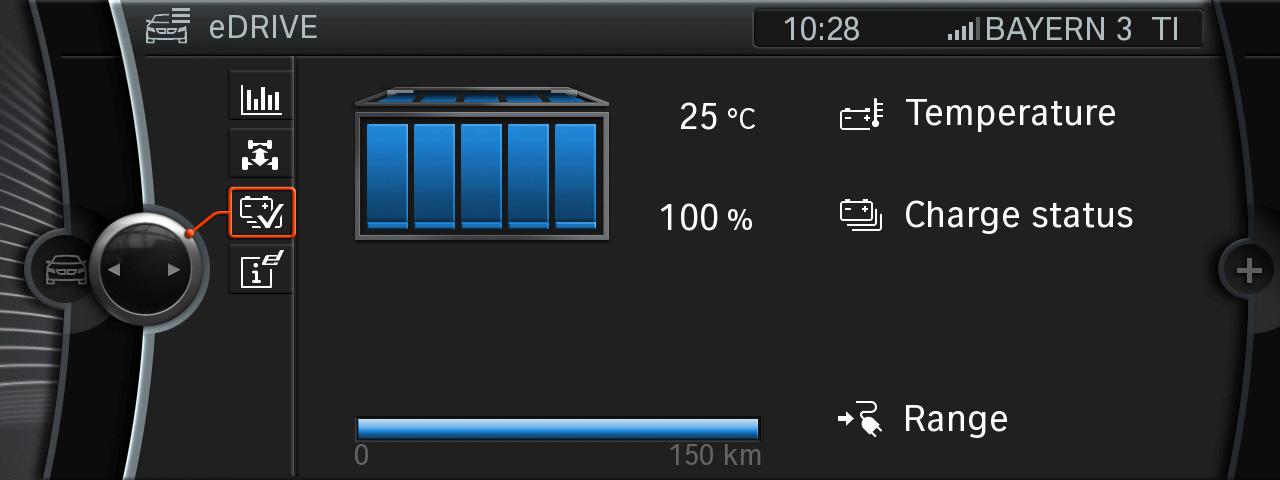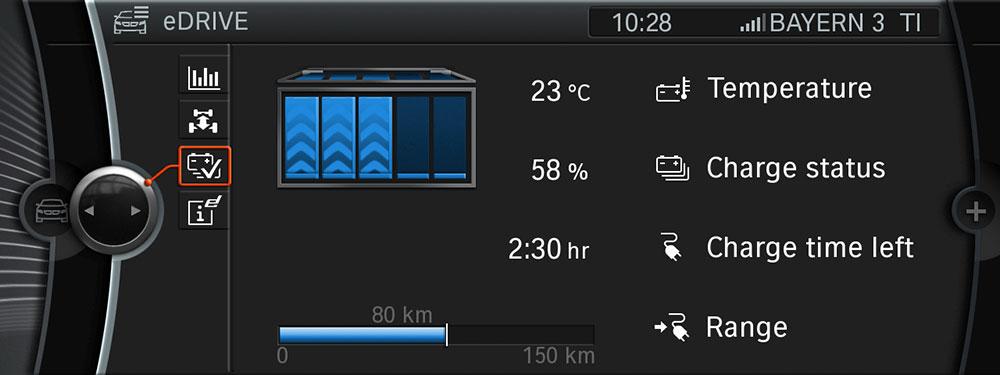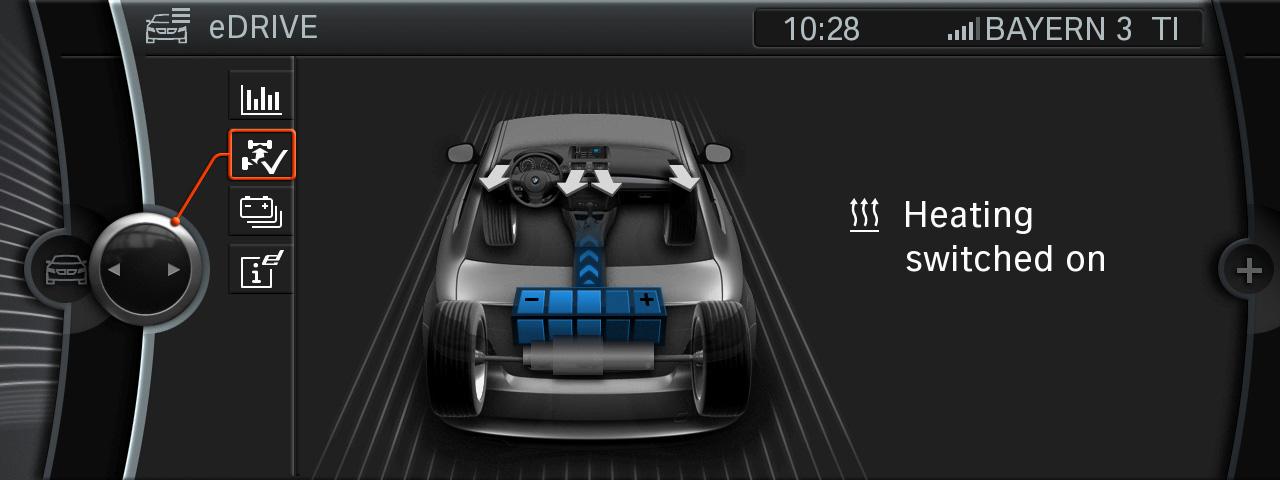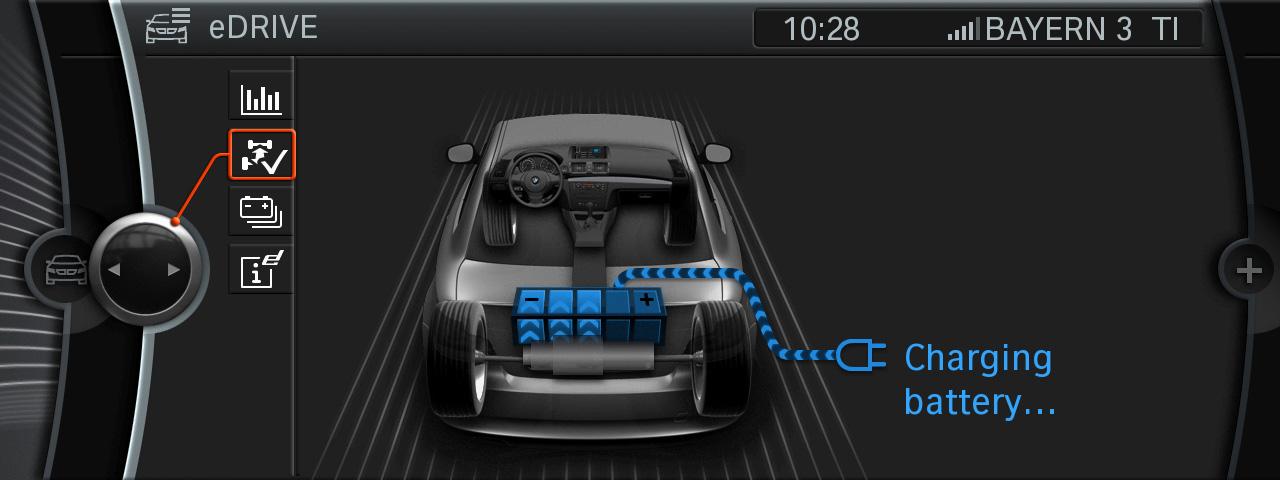The electric motor’s torque made it easy to exploit gaps in traffic, and the stock 1 Series nimbleness remained mostly intact despite the fact that the ActiveE weighs 716 pounds more than a 2013 128i coupe.
BMW is taking a big risk with the i3, a clean-sheet all-electric city car that seeks to redefine EVs and the entire premium compact vehicle segment in one fell swoop. The i3 isn’t quite a great of a leap as it seems, though: BMW has already built an electric car, called the “ActiveE.”
The BMW ActiveE is obviously a work in progress, but it bodes well for the full-stop i3 production car.
However, the ActiveE isn’t like most cars; it’s a combination prototype and drivable research vehicle for BMW. Which is why, even though it’s been available for lease since late 2011, you probably haven’t seen one on the road. And even if you did, you may not have known what you were looking at.
Based on the 1 Series coupe, the ActiveE was part of a pilot program that allowed BMW to gather valuable real world data on electric cars and how customers use them. That information was used in the development of the i3.
I recently had a chance to drive the ActiveE to see if this prequel bodes well for the production i3.
Getting Active
Other than the circuit board stickers on the side, one would never know that the ActiveE was anything order than an ordinary 1 series, the sawed-off shotgun version of the previous generation (E92) 3 Series coupe.
Open the door and it’s the same story: only a few pieces of tacky white plastic and a revised center console with range and a battery charge gauge.

There’s also an eDrive display that gives a more detailed picture of what the battery is doing through the center stack information screen. Graphics show the battery’s state of charge, and whether the battery is sending energy to the motor or receiving it from the wheels through regenerative braking. Other than that, the interior is just like a stock 1 Series’.
Under the skin, it’s a completely different story. The engine bay is occupied by an electric motor with the same 170 horsepower and 184 pound-feet of torque as the i3. Lithium-ion battery cells are crammed into the remaining space under the hood, in the transmission tunnel, and in the space normally occupied by the fuel tank. All of those cells add up to 32 kWh of capacity.
A life-size slot car
Getting underway is quite a process: insert the key into a dashboard slot, press the Engine Start button, unlock shifter, toggle it back to engage Drive. And after all that, the driver is rewarded with silence. Only the gauges indicate that the ActiveE is ready for launch.
Looking at the ActiveE’s specs, it’s hard to anticipate an exciting ride either. BMW says the car will reach 62 mph (100 kph) in nine seconds, and its top speed is limited to 90 mph, 3mph less than the i3.

None of that matters, though. Once the throttle (it’s not a gas pedal, is it?) is pushed, the ActiveE surges away with plenty of enthusiasm. Like all EVs, all of the motor’s torque is available at zero rpm but the ActiveE seems especially quick in stoplight drag races.
Zipping around Manhattan’s West Side, we found the ActiveE ideally suited to urban driving. The electric motor’s torque made it easy to exploit gaps in traffic, and the stock 1 Series nimbleness remained mostly intact despite the fact that the ActiveE weighs 716 pounds more than a 2013 128i coupe, most of that due to the battery’s weight.
At highway speeds, we believe that bulk would have taken the edge off the ActiveE’s glorious torque, but on New York City streets, it was a champ. We could have spent all day doing loops around town like we were on a life-size slot car track.
Putting a stop to the fun, literally, was the ActiveE’s regenerative braking system. Regeneration is so strong that lifting off the throttle induced neck-snapping deceleration, likely akin to being on the Space Shuttle when the drag chutes deploy.
BMW says it equipped the ActiveE with a coasting mode, which lessens regeneration midway through the pedal’s travel. We didn’t notice it.
Numbers
Those powerful regenerative brakes help give the ActiveE a range of 100 miles, according to BMW. That compares favorably with production EVs like the Nissan Leaf (75 miles) and Chevrolet Spark EV (82 miles), but probably won’t lessen feelings of range anxiety.
Looking at the ActiveE’s specs, it’s hard to anticipate an exciting ride…
Using city streets as your own personal racetrack will significantly lessen that range, though. BMW says a full charge from a 240 volt source takes four to five hours, with a 120 volt charge from that normal outlet in the garage presumably taking much, much longer.
BMW imported about 700 ActiveEs to the United States, leasing them to customers at $2,250 down and $499 a month for two years. The company timed the lease period to end just in time for the rollout of the i3, so if you want to own an electric BMW, you’ll have to wait for that one. The ActiveE is also being used in BMW’s DriveNow electric car sharing program.
Better (i3) things are coming
The BMW ActiveE is obviously a work in progress, but it bodes well for the full-stop i3 production car. Its low-end torque and nimble handling show just how well-suited a small EV is to urban driving, while keeping it in a city (one with plenty of charging stations, that is) makes its short range less of an issue.
For a beta version, the ActiveE is a pretty good electric car. We’ll wait to see if BMW has channeled its good qualities into the production i3.
Highs
- Despite battery heft, has pep and power
- BMW driving dynamics survive intact
- Never needs gas!
Lows
- 700+ pounds heavier than gas-powered version
- Range, charging times and places remain issues
- About to be rendered obsolete by the i3
Editors' Recommendations
- Fiat’s 500e returns as a stylish and affordable small EV
- 2024 Mercedes-AMG S63 E Performance first drive review: high-performance plug-in
- Mercedes-Benz EQE SUV first drive review: ’90s look, cutting-edge tech
- BMW i4 vs. Tesla Model 3: Which EV sedan is better?
- Business upfront, 31-inch TV in the back. BMW’s electric i7 is a screening room on wheels






